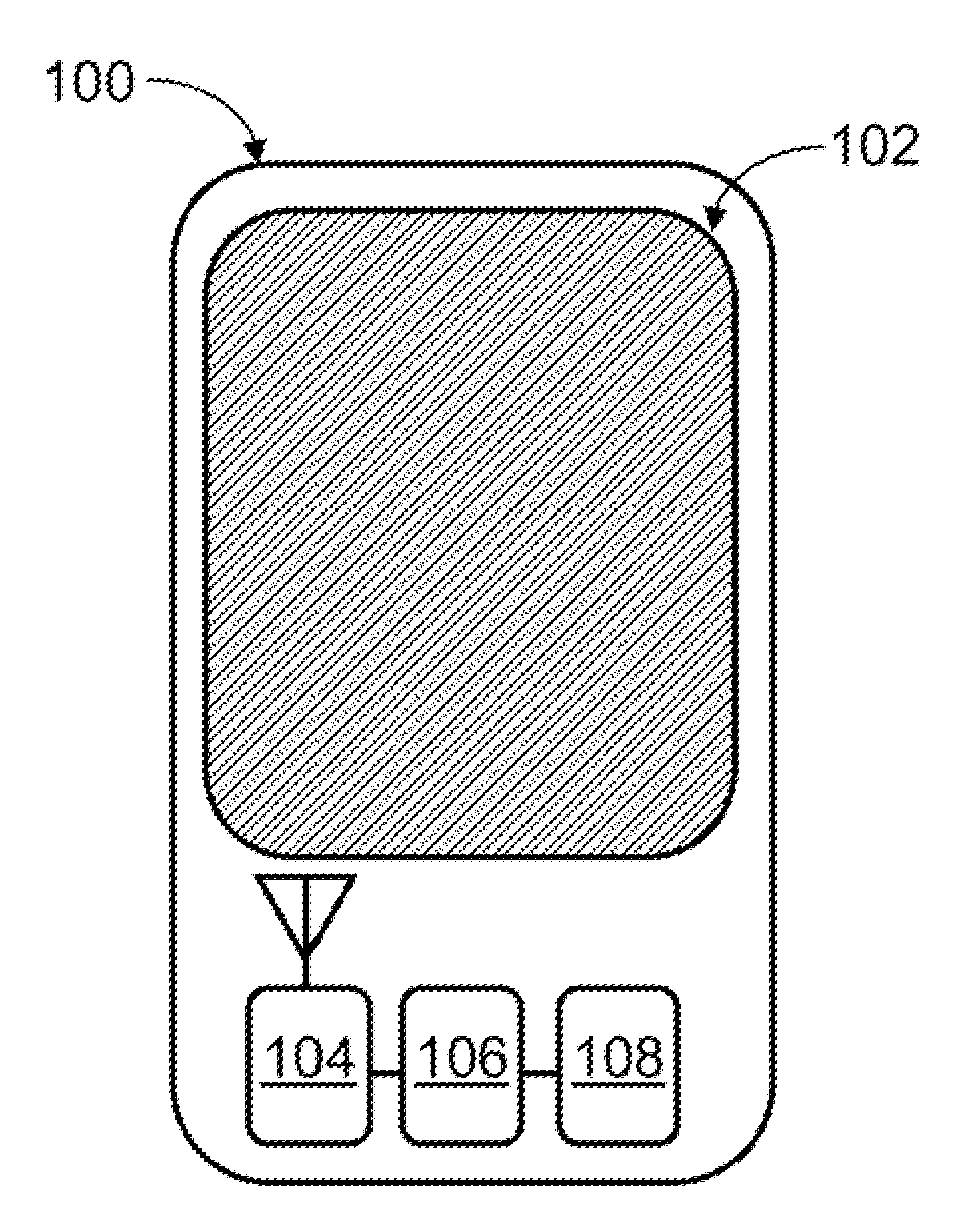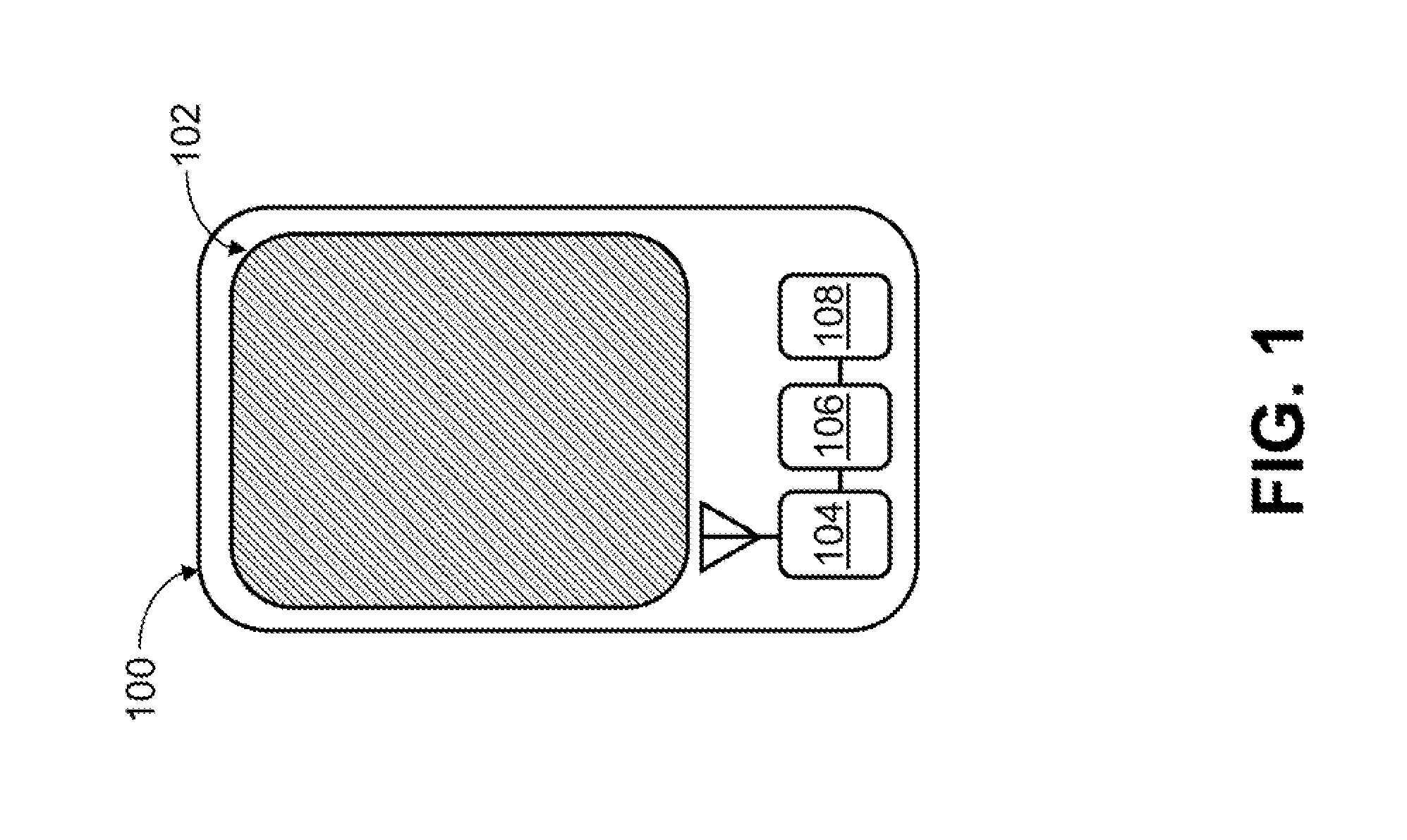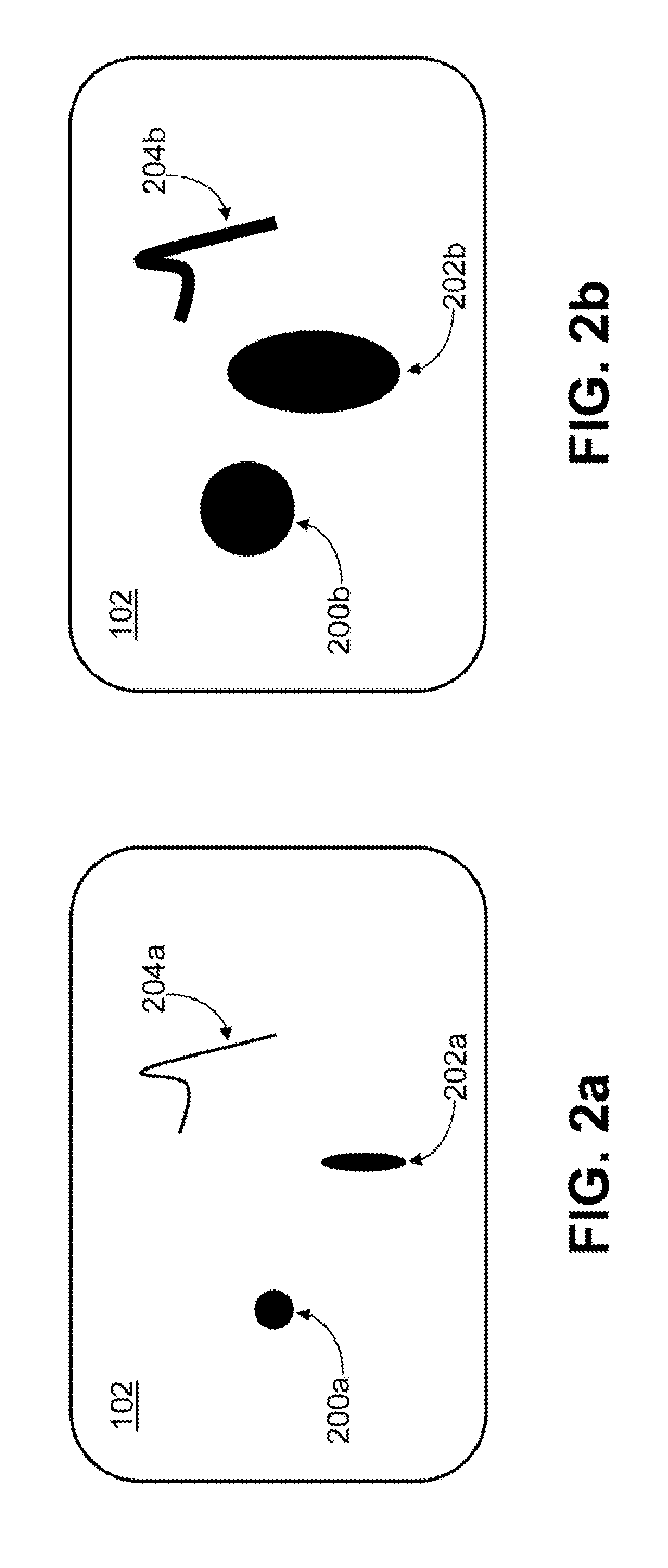Using pressure differences with a touch-sensitive display screen
a touch-sensitive display and pressure difference technology, applied in the field of personal electronic devices, can solve problems such as confusion and unpredictable display screens
- Summary
- Abstract
- Description
- Claims
- Application Information
AI Technical Summary
Benefits of technology
Problems solved by technology
Method used
Image
Examples
Embodiment Construction
[0021]Turning to the drawings, wherein like reference numerals refer to like elements, the invention is illustrated as being implemented in a suitable environment. The following description is based on embodiments of the invention and should not be taken as limiting the invention with regard to alternative embodiments that are not explicitly described herein.
[0022]FIG. 1 shows a representative personal electronic device 100 (e.g., a cellular telephone, personal digital assistant, or personal computer) that incorporates an embodiment of the present invention. FIG. 1 shows the device 100 as a cellular telephone presenting its main screen 102 to its user. Typically, the main screen 102 is used for most high-fidelity interactions with the user. For example, the main screen 102 is used to show video or still images, is part of a user interface for changing configuration settings, and is used for viewing call logs and contact lists. To support these interactions, the main screen 102 is of...
PUM
 Login to View More
Login to View More Abstract
Description
Claims
Application Information
 Login to View More
Login to View More - R&D
- Intellectual Property
- Life Sciences
- Materials
- Tech Scout
- Unparalleled Data Quality
- Higher Quality Content
- 60% Fewer Hallucinations
Browse by: Latest US Patents, China's latest patents, Technical Efficacy Thesaurus, Application Domain, Technology Topic, Popular Technical Reports.
© 2025 PatSnap. All rights reserved.Legal|Privacy policy|Modern Slavery Act Transparency Statement|Sitemap|About US| Contact US: help@patsnap.com



